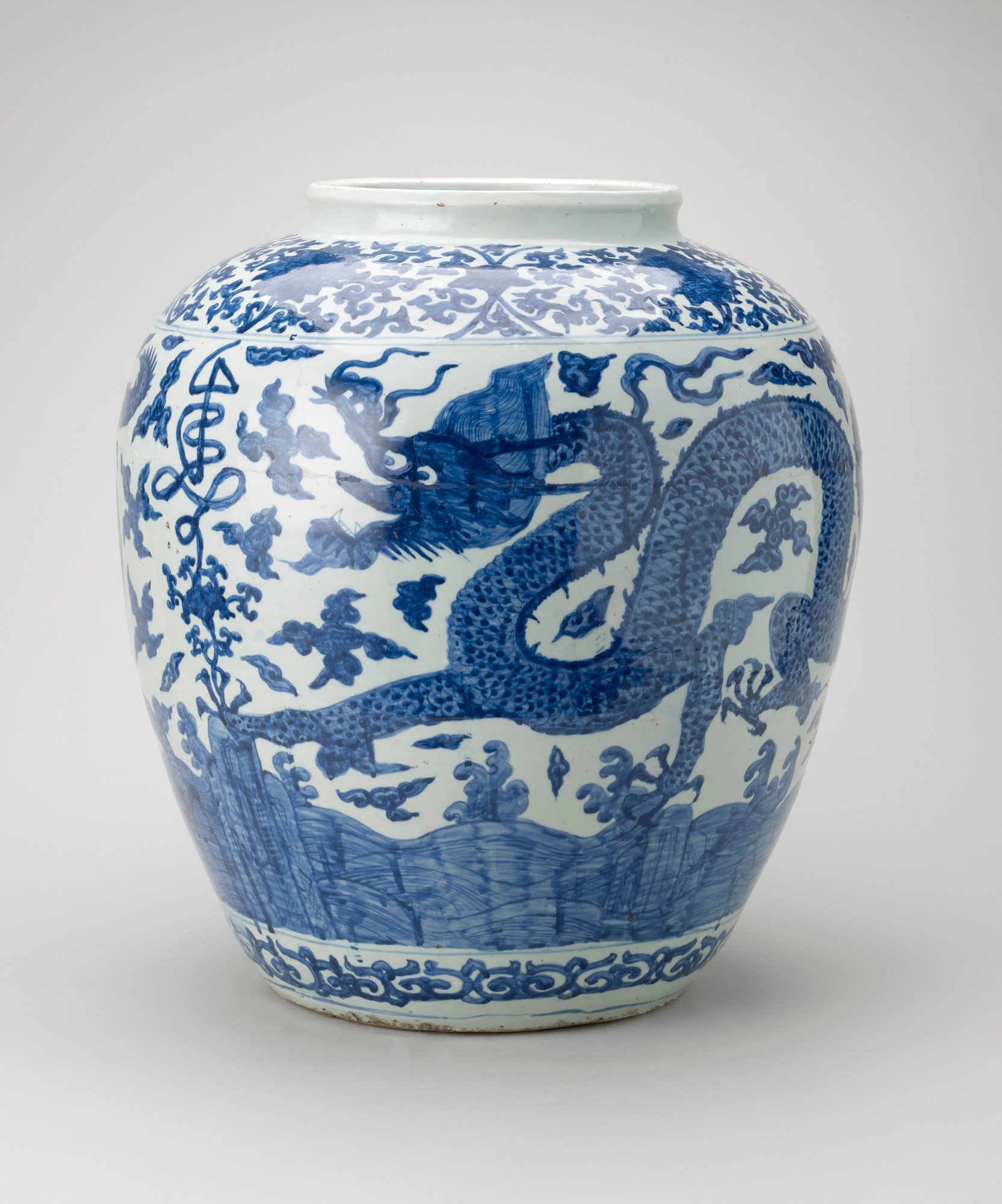
East Meets West
Extraordinary Chinese and Japanese Works of Art in the Royal Collection
Materials and Techniques
Porcelain items were traditionally the most famous and sought-after Asian wares. The Chinese had developed this unique material by the time of the Tang dynasty (618–906) and it was soon in high demand for its novel properties of whiteness and translucency. The new wares could be decorated in a variety of ways using a combination of coloured glazes and enamels. The most famous decorative style is the blue-and-white porcelain associated with the Ming dynasty, but over time more colourful palettes were developed and popularised. Many Chinese and Japanese wares in the Collection feature traditional Eastern figures, symbols and poetry, while others made to order for Western customers are decorated with European landscapes or coats of arms.
Chinese and Japanese works of art were sometimes added to or altered on their arrival in Europe. Asian porcelains were considered exotic and rare, so – like other precious objects such as rock crystal and amber – they were often encased in silver, silver-gilt or gold mounts. The use of such rich materials emphasised the preciousness of the object and also provided practical protection for the fragile porcelain itself. In the eighteenth century, gilt bronze became the preferred material for mounting since it matched contemporary interiors, which were often lined with gilded wooden panelling and hung with paintings in gilded frames. George IV (1762–1830) collected a vast array of mounted porcelain of this type for his lavish rooms at Carlton House and the Royal Pavilion, Brighton.
In addition to porcelain, a wide range of other Asian materials have long been in demand in Europe. These include furniture and boxes decorated with lacquer (a tree resin), jade carvings and traditional silks, all of which are represented in the Royal Collection.
Click on an object below to learn more.







